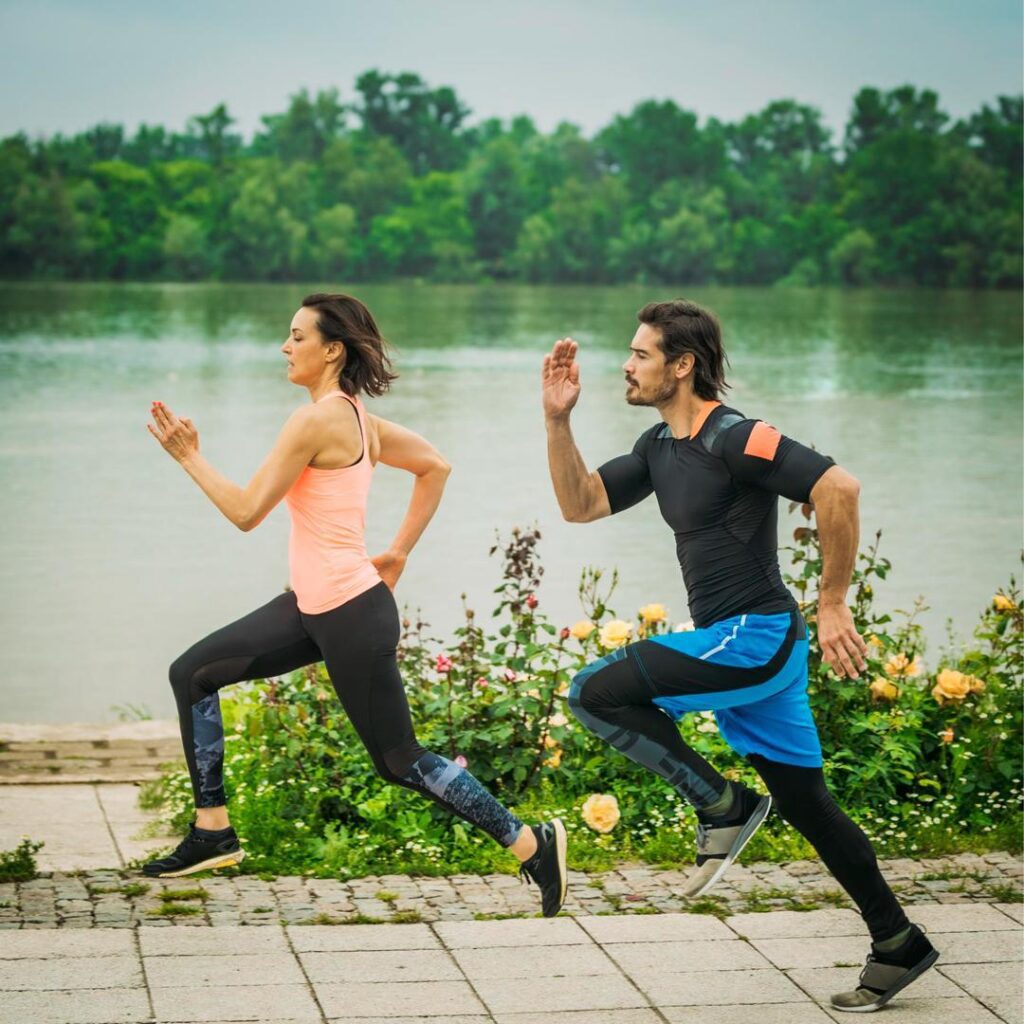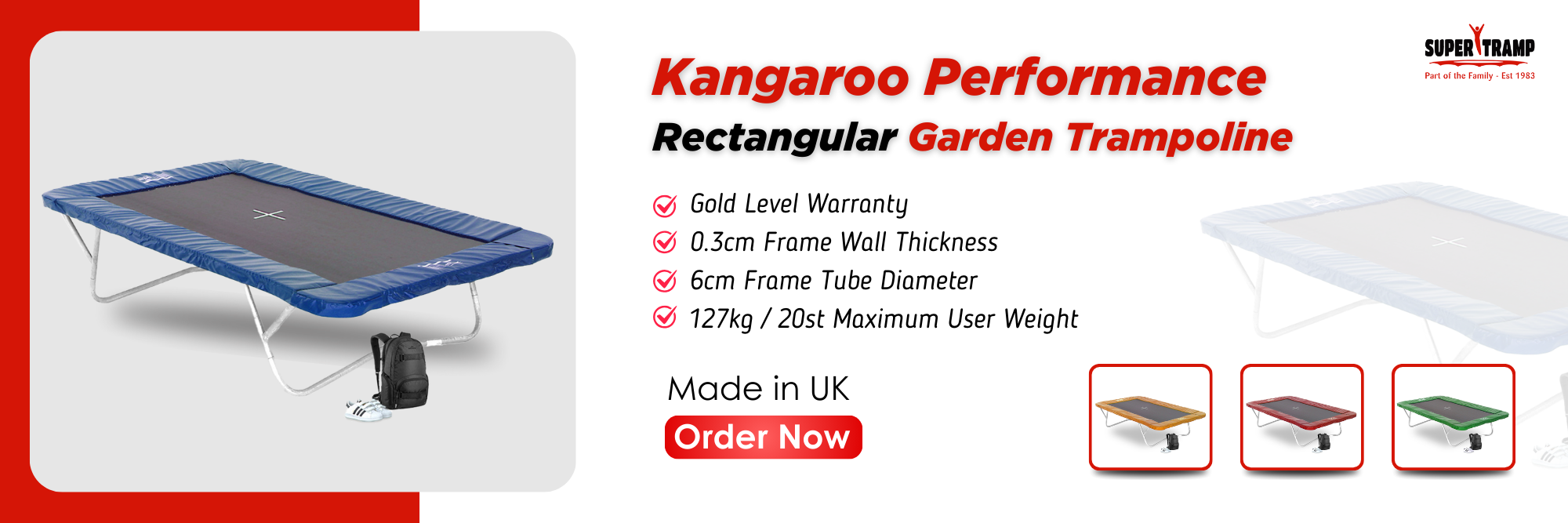Physical activity is crucial for a healthy lifestyle, regardless of age. It helps you stay productive, maintain a great physique, and enhance your overall well-being. Simple activities like walking or cleaning, and more engaging ones like cycling, bouncing on trampoline, dancing, or playing sports, can bring joy and energy into your life, making every day brighter.
Table of Contents
ToggleThis blog is designed to guide you through the essential physical activity guidelines recommended by the World Health Organization (WHO). Whether you’re a parent looking to keep your child active or someone eager to improve your fitness, this blog has all the information you need to get moving.

So, why wait? You don’t need a partner or special equipment to start. It’s time to take charge of your health and start moving today!
What WHO Says About Physical Activity
The World Health Organization (WHO) emphasises the importance of physical activity for everyone. Physical activity includes any movement that requires energy, such as walking, cycling, playing sports, or even daily chores. Engaging in moderate to vigorous activities improves overall health and well-being, while inactivity increases the risk of serious diseases like heart disease, diabetes, and obesity.
Globally, WHO’s guidelines aim to reduce these health risks by encouraging people of all ages to stay active. By following these recommendations, we can improve our health, reduce the burden on healthcare systems, and contribute to global health goals.
Now that we understand WHO’s recommendations and their global significance, let’s explore the specific benefits that regular physical activity can bring to your health and well-being.
Benefits of being active
Regular physical activity is a powerful tool for improving your overall health and well-being. Whether you’re looking to boost your fitness, enhance your mental health, or manage your weight, staying active can make a significant difference. Let’s dive into some key benefits of physical activity:
- Improved Physical Fitness: Engaging in regular physical activity, like jogging, swimming, or even bouncing on a trampoline, strengthens your heart and lungs. It also builds muscle strength and endurance, helping you stay active and energetic throughout the day. Garden Trampoline exercises, in particular, are a fun way to improve balance and coordination while also giving your cardiovascular system a great workout.
- Better Cardiometabolic Health: Physical activity helps keep your heart healthy by lowering blood pressure, regulating cholesterol levels, and controlling blood sugar. Activities like brisk cycling, and dancing can significantly reduce your risk of heart disease and diabetes, ensuring that your heart and metabolism function optimally.
- Stronger Bones: Weight-bearing exercises, such as jumping rope, and resistance training, help build and maintain strong bones. This is especially important as we age, as it reduces the risk of osteoporosis and fractures.
- Enhanced Mental Health: Regular exercise is a natural mood booster. It helps reduce symptoms of depression and anxiety and improves overall cognitive function. Whether it’s a morning jog or a dance class, physical activity releases endorphins, the “feel-good” hormones, leaving you happier and more focused.
- Reduced Body Fat: Staying active is one of the most effective ways to manage your weight. Whether you’re taking a walk, bouncing on an in-ground trampoline, or doing a high-intensity workout, these activities burn calories and reduce body fat, helping you maintain a healthy weight.
- Lower Risk of Hypertension: Regular physical activity is key to preventing high blood pressure. Even moderate activities, like walking or cycling, can help keep your blood pressure in check and reduce your risk of developing hypertension.
- Prevention of Type-2 Diabetes: Exercise plays a crucial role in preventing and managing type-2 diabetes. By improving insulin sensitivity and regulating blood sugar levels, activities like aerobics and strength training help keep diabetes at bay.
- Safer Pregnancy and Delivery: For pregnant women, staying active can reduce the risk of complications during delivery. Gentle exercises, like walking, or prenatal yoga, can keep both mother and baby healthy, making the delivery process smoother.
These benefits highlight the importance of incorporating physical activity into your daily routine. No matter your age or fitness level, there’s always a way to stay active and reap the rewards of a healthier, happier life.
Now that we’ve explored the numerous benefits of staying active, let’s look at the specific guidelines that can help you make the most of physical activity at every stage of life.
Guidelines for you
To ensure that physical activity is safe and effective, it’s important to follow age-specific guidelines. These guidelines help you get the most out of your activities, whether you’re a child, a teenager, or an adult.
For People Aged 5 to 18
Minimum Activity Levels: Every day, children and teenagers should strive to engage in moderate-to-intense physical activity for at least 60 minutes. This could be spread throughout the day to keep it fun and engaging.
Types of Activities
- Aerobic Exercises: Activities like running, swimming, or playing soccer improve cardiovascular fitness and endurance.
- Strengthening Exercises: Exercises like climbing, jumping, or bouncing on a trampoline with best quality spring help build strong muscles and bones. Trampolining is especially great for this age group, as it’s both fun and effective in improving balance, coordination, and leg strength.
For People Aged 19 to 64
Minimum Activity Levels: Adults should aim for at least 150-300 minutes of moderate-intensity aerobic activity per week, such as brisk walking, or 75-150 minutes of vigorous-intensity activity, like running. This can be spread across the week, making it easier to fit into a busy schedule.
Types of Activities
- Aerobic Activities: Engage in exercises that raise your heart rate, such as cycling, swimming, or dancing. These activities improve heart health, and mental well-being, and help manage body fat.
- Muscle-Strengthening Activities: At least twice a week, include exercises that target major muscle groups like the legs, hips, back, abdomen, chest, shoulders, and arms. Weight training, resistance exercises, or even bodyweight exercises like push-ups and squats are great options. Activities like trampoline with safety enclosures can also contribute by strengthening your core muscles and improving balance.
These guidelines are not just recommendations—they’re a blueprint for a healthier, more active lifestyle. Whether you’re 5 or 64, making physical activity a regular part of your routine will help you stay fit, mentally sharp, and physically strong.
With a clear understanding of the recommended physical activity levels, let’s now delve into how the trampoline can help you with your physical activities.
How Trampolines Support Physical Activity
Trampolines are not just a source of fun—they offer fantastic support for physical activity and fitness across all age groups. Here’s how different types of trampolines can benefit you:
Rectangular Trampolines
- Overview: Known for their larger jumping surface, rectangular trampolines are often used for more precise and controlled movements.
- Benefits: Ideal for gymnasts and athletes, rectangular trampolines offer greater stability and can support a variety of exercises, from jumping drills to complex flips. They help improve agility, strength, and flexibility, making them a valuable addition to any fitness routine.
Round Trampolines
- Overview: The most common type, round trampolines are widely used for recreational jumping.
- Benefits: Round trampolines are great for family fun and fitness. They offer a balanced bounce that’s easy on the joints and promotes overall fitness and coordination. They are suitable for both children and adults, providing an enjoyable way to enhance cardiovascular health and reduce body fat.
Commercial Trampolines
- Overview: Found in schools or public places, these large trampolines are built for frequent use by groups.
- Benefits: Commercial trampolines support group activities and physical education programs. They help improve students’ physical fitness, balance, and coordination in a structured environment. Additionally, they offer a fun way to engage in physical activity, promoting a healthy lifestyle among children and teenagers.
Using trampolines for exercise combines fun with fitness, making it an enjoyable way to stay active. Whether you choose a trampoline for personal use or as part of a school program, you’ll be supporting your physical health and overall well-being engagingly and effectively.
Conclusion
Physical activity is more than just a way to stay fit; it’s the cornerstone of a healthy, fulfilling life at every age. From boosting your heart health to lifting your mood and even managing your weight, staying active is the key to feeling great and living well. Whether you’re a child bouncing on a trampoline or an adult exploring new fitness routines, every movement counts.
As you incorporate physical activity into your daily routine, remember that it’s about making it enjoyable and fitting it into your life. The guidelines we’ve discussed provide a roadmap for staying active at different life stages, but the most important step is to start moving in a way that you love. So, lace up your sneakers, find an activity that excites you, and make it a regular part of your day.
Share these guidelines with friends and family to inspire them to join you on this journey to better health. And if you have any questions or need advice tailored to your needs, don’t hesitate to reach out to a healthcare professional.
You are now on your way to becoming a happier, healthier version of yourself. What’s your favourite way to stay active? Please leave a remark or tell us about your experiences. Let’s motivate each other to keep moving and thrive together!
Healthy adults should engage in at least 150-300 minutes of moderate-intensity or 75-150 minutes of vigorous-intensity physical activity per week, as recommended by physical activity guidelines.
Physical activity boosts happiness by releasing endorphins, which improve mood and reduce stress, making physical activity a natural mood enhancer.
The UK physical activity guidelines recommend that adults should aim for 150 minutes of moderate-intensity or 75 minutes of vigorous-intensity activity each week, along with muscle-strengthening activities on two or more days.
The NHS recommends that adults should do at least 150 minutes of moderate-intensity or 75 minutes of vigorous-intensity physical activity each week, plus muscle-strengthening exercises on two or more days.
Guidelines for health and fitness include engaging in a mix of aerobic and muscle-strengthening physical activity regularly, tailored to your age and fitness level, to achieve optimal health benefits.
DON'T MISS...
- Trampoline Fitness Tips to Achieve Attractive Physique in Your 40’s
- Spring vs. Springfree Trampolines: Which One is Right for Your Garden?
- 45-Minute Fitness Trampoline HIIT Cardio Workout
- 4 steps to choose perfect 10ft playground trampoline
- How to Achieve Physique Like Henry Cavill: “The Cavillerine”





